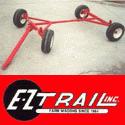USDA Announces Farm to School Grants
USAgNet - 09/13/2025
The U.S. Department of Agriculture is delivering on its commitment to support child health and American agriculture by opening applications for the Fiscal Year (FY) 2026 Patrick Leahy Farm to School Grants. Through this grant opportunity, USDA will invest
up to $18 million in farm to school projects that connect farmers to USDA's child nutrition programs through local food procurement, agricultural education, school gardens, and more.
New this year, USDA reimagined the Farm to School Grant program, implementing several improvements, including streamlining the application, removing barriers to innovation, and emphasizing partnerships to give small family farms the best chance at success.
"Yesterday at the MAHA Report announcement, alongside Secretary Kennedy, we announced one of the key actions USDA has already taken to contribute to making our children healthy again - Farm to School Grants. These initiatives are one of the best
ways we can deliver nutritious, high-quality meals to children, while also strengthening local agriculture," said Secretary Brooke Rollins. "These grants will open new doors for small family farms, expand access to healthy food in schools, and inspire the next
generation of Great American Farmers. Under President Trump's leadership, USDA is proud to streamline this program, so it works better for families, farmers, and communities across our nation. Putting America's Farmers First starts with putting our children
first."
Since the Farm to School Grant program's inception in 2013, USDA has awarded a total of $100 million to more than 1,200 Farm to School Grant projects across the country. This year's grants represent the largest total amount USDA has offered in Farm to
School Grants in a single year.
- AFBF Study: Farmers Urgently Need Economic Assistance
- U.S. Soybeans Set for First Chinese Shipment Since May
- Cranberry Production Forecast to Land Near Five-Year Average
- Tyson Foods to Close Nebraska Beef Processing Plant
- Deere Reports Lower Sales, Net Income During 2025
- Ag Secretary Leads Largest USDA Trade Mission to Mexico
- Land O'Lakes, Microsoft Working to Accelerate AI in Agriculture



